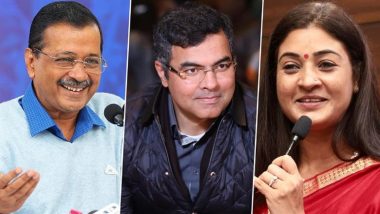New Delhi, Sep 11 (PTI) India's oil demand will rise by the fastest pace globally this year and the next even as its economic expansion has slowed down, oil producers cartel OPEC said on Wednesday.
In its monthly World Oil Demand report, OPEC said India's oil demand is projected to rise by 3.21 per cent to 4.88 million barrels per day (mb/d) in 2019 from 4.73 mb/d in the previous year. In 2020, it will further rise by 3.36 per cent to 5.05 mb/d.
This outpaces China's oil demand growth of 2.73 per cent in 2019 and 2.37 per cent in 2020. China, however, is the world's second-biggest oil consumer at 13.06 mb/d in 2019, behind only the US whose consumption is projected at 20.94 mb/d.
World oil demand in 2019 is expected to grow by 1.02 mb/d, which is 0.08 mb/d lower than the previous projection, OPEC said.
"The drop can be attributed to weaker-than-expected data in 1H19 from various global demand centres and slower economic growth projections for the remainder of the year," it said. "In 2020, world oil demand is projected to increase by 1.08 mb/d. This also represents a downward adjustment of 0.06 mb/d from the previous assessment, mainly to accommodate changes to the world economic outlook for 2020."
OPEC, which counts India as one of its biggest consumers, said the country has experienced significantly lower-than-expected growth rates for first half of 2019 amid ongoing structural challenges.
"While some pick-up in 2H19 is expected, growth rates are forecast to be lower than in past years at 6.1 per cent for 2019 and 6.7 per cent for 2020," it said.
It put China's GDP growth at 6.2 per cent in 2019 and 5.9 per cent in 2020.
"India's 1H19 growth numbers showed a much larger-than-expected slowdown, leading to a downward revision of 2019 growth to 6.1 per cent from 6.8 per cent. Some spill-over is forecast to continue in 2020, leading to a downward revision to 6.7 per cent from 7.0 per cent," it said.
Asia's third-largest economy grew at slower than expected 5 per cent in April-June. India's economy grew 8 per cent in the same quarter of 2018, and 5.8 per cent in January-March.
"Signs of slowing demand and investment are widespread. Many indicators such as automobile sales, rail freight, petroleum product consumption, domestic air traffic and imports signal declining domestic consumption," it said.
Auto sales have seen biggest decline ever, resulting in the loss of hundreds of thousands of jobs.
"In the 2Q19, private investment grew 3.1 per cent, down from 7.2 per cent in the previous quarter, while the government spending growth slowed to 8.8 per cent from 13.1 per cent," it said.
Capital investment picked up to 4 per cent from 3.6 per cent, indicating a rise in lending by banks, while agriculture grew modestly and manufacturing edged up just 0.6 per cent.
"Fixing India's weak growth has become the highest priority while a benign inflation outlook has given the central bank room to cut rates. Transmission remains inadequate, monetary policy committee meeting minutes showed," OPEC said. "The government was looking into policy issues such as exempting foreign portfolio investor trusts from recently imposed high tax, deferring a proposal to raise minimum public shareholding in listed companies to 35 per cent from 25 per cent and an easing of banking credit."
"It seems India's economic slowdown could continue for the next two to three years as the economy faces serious structural reform, which will hurt consumer demand and manufacturing," OPEC said. "Structural reforms - covering labour laws, taxation and the legal system also ease the path for India's businesses in the coming year."
However, stimulus from both the RBI and the government, along with a near-normal monsoon, could provide some economic relief in the second half of 2019, it added.
(This is an unedited and auto-generated story from Syndicated News feed, LatestLY Staff may not have modified or edited the content body)













 Quickly
Quickly





















